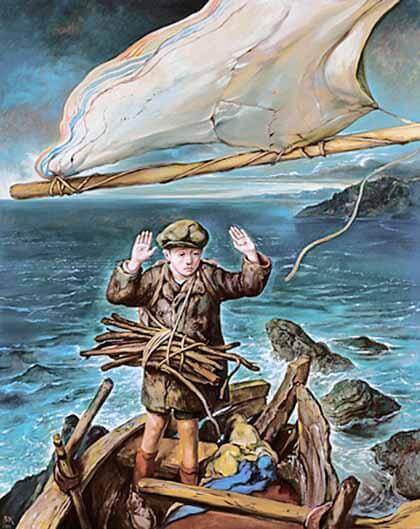By Rich Bockmann
“Icons of Loss” is the title given to an exhibition of oil paintings by Holocaust survivor Samuel Bak currently on display at the Queensborough Community College art gallery.
Bak was only 6 years old when the Nazis invaded his hometown of Vilna, Poland, and Faustino Quintanilla, executive director of the art gallery, said that through both content and style the artist expresses his experiences during that horrifying time as well as his attempts to rebuild and reconcile his life afterward.
“He deconstructs and then reconstructs,” said Quintanilla. “That’s what’s exciting to me.”
The 50 paintings on display are on loan from the Pucker Gallery in Boston — not far from the 77-year-old artist’s home in Weston — and most were painted during the last decade. They display landscapes constructed of fragmented pieces, and Quintanilla interprets these as the broken pieces of the artist’s life: his society, family and faith.
The exhibit is divided into two sections. In the first, “Little Boy,” the paintings are based on a photograph showing families being removed from a building by Nazi soldiers in the Warsaw Ghetto. The young boy stands with his hands in the air, wearing a frightened expression on his face. The photo was gathered in a volume and presented to Heinrich Himmler, the SS leader, as a birthday present.
In Bak’s paintings the image of the boy appears over and over again set against a variety of broken landscapes — often even incorporated into them.
The paintings of “Angels,” the exhibit’s second section, use a 16th-century engraving by the German Renaissance artist Albrecht Durer entitled “Melancholia I” as their motif. In the engraving, an angel stares off to the side contemplatively, and the work has been subject to many interpretations.
“The angel is the connector between God and ourselves,” said Quintanilla. “Like the angel, [Bak] is reflecting on how to rebuild himself one more time.”
Quintanilla believes a ladder leaning in the background of the engraving is Jacob’s ladder and points out that Bak reproduces the symbol and others — such as carts used to transport Jews — throughout his works. Thus, one’s reading of the paintings is heavily influenced by how much he or she knows about those symbols.
The exhibit is open to the public for free and runs through April 30.
Reach reporter Rich Bockmann by e-mail at rbockmann@cnglocal.com or by phone at 718-260-4574.


































